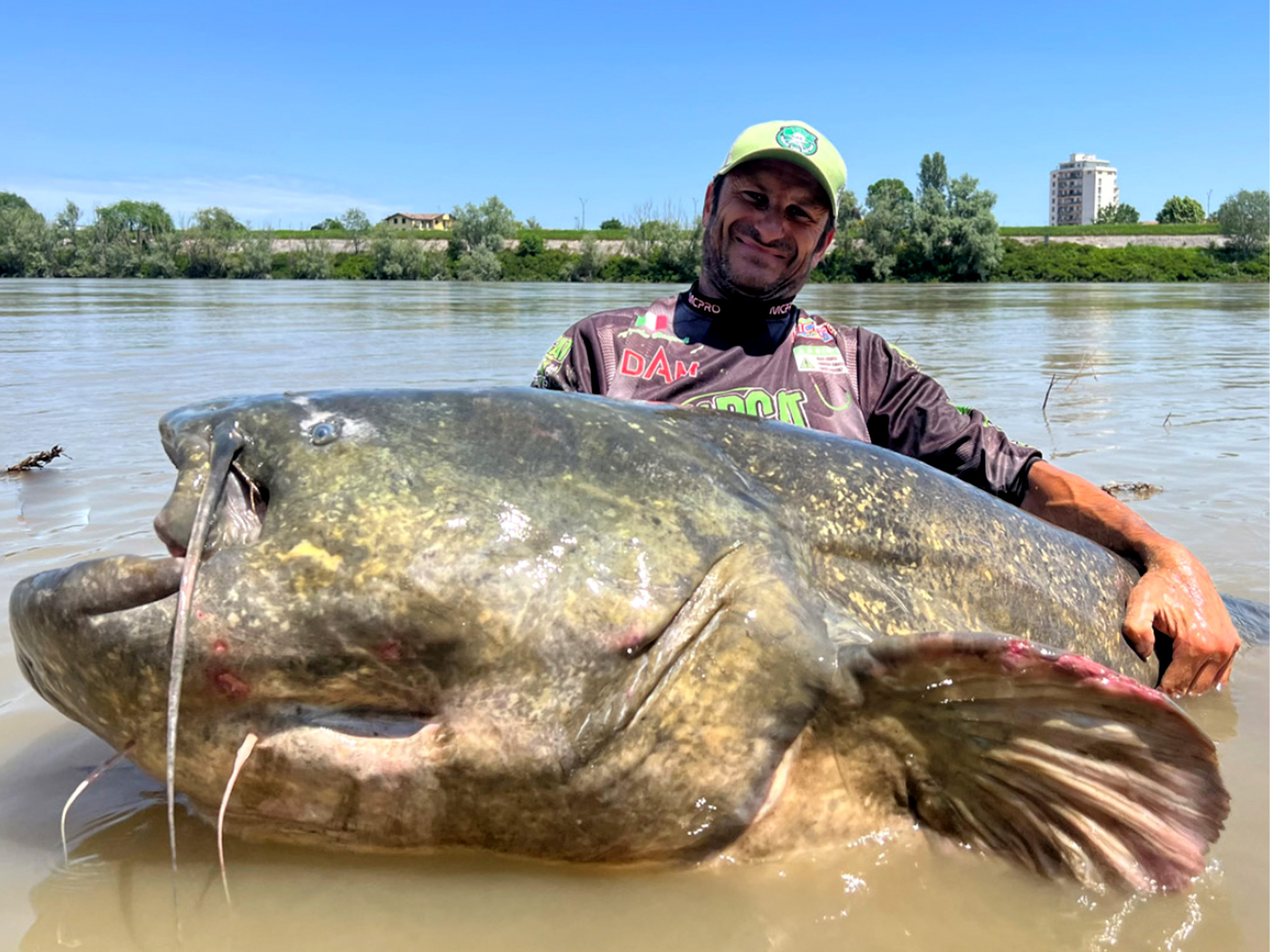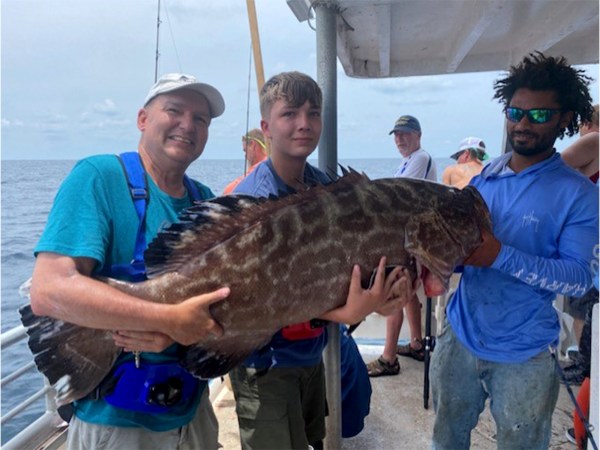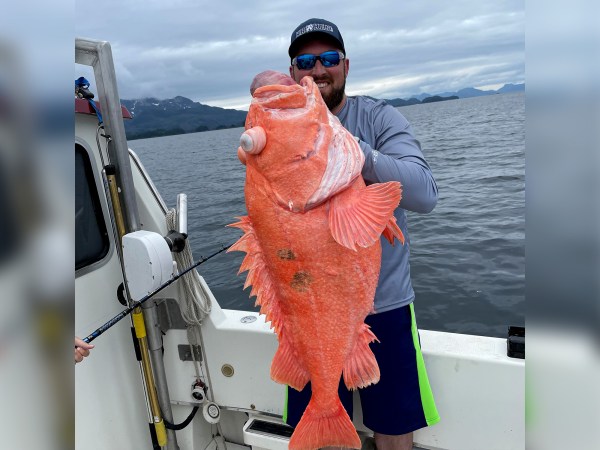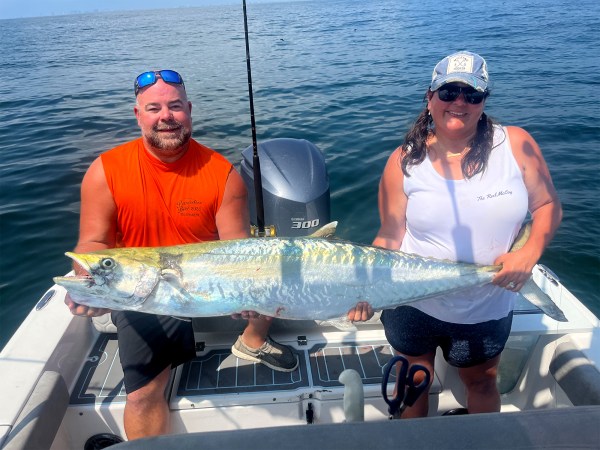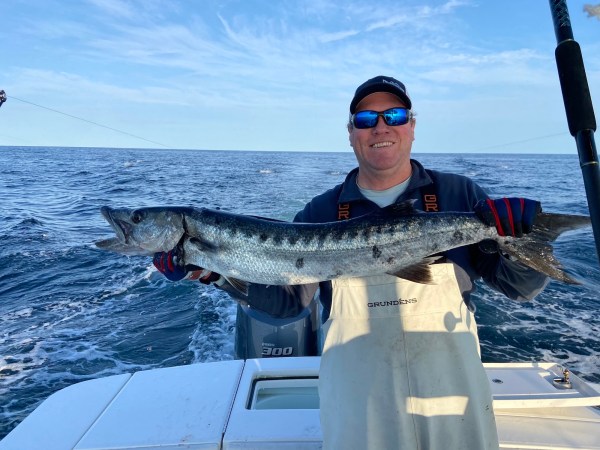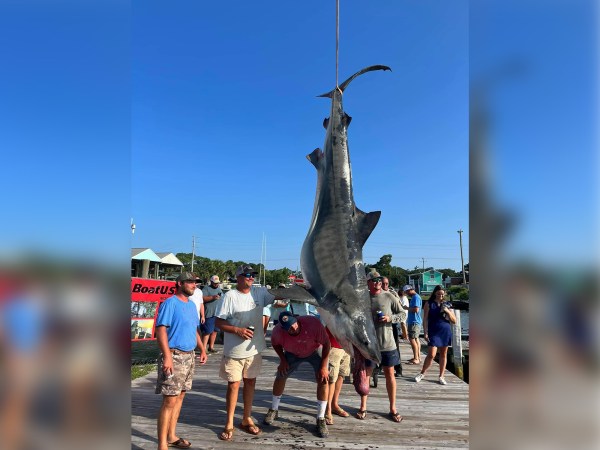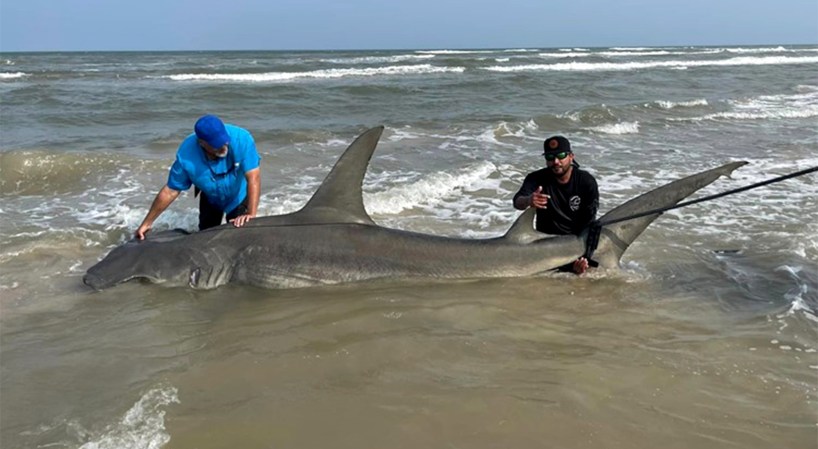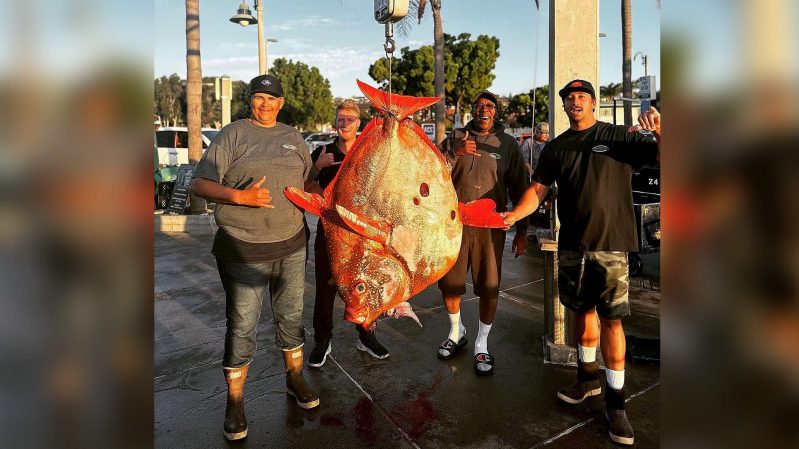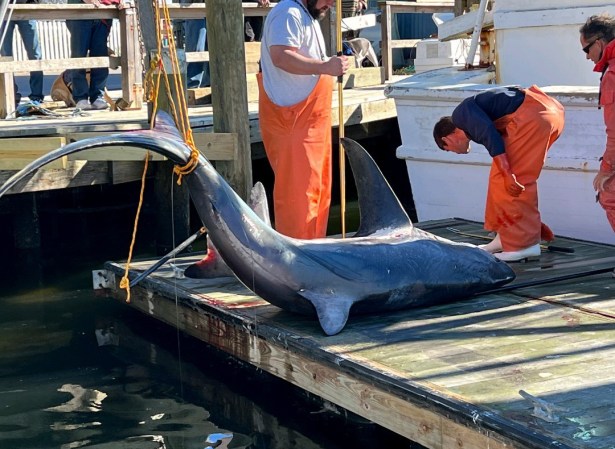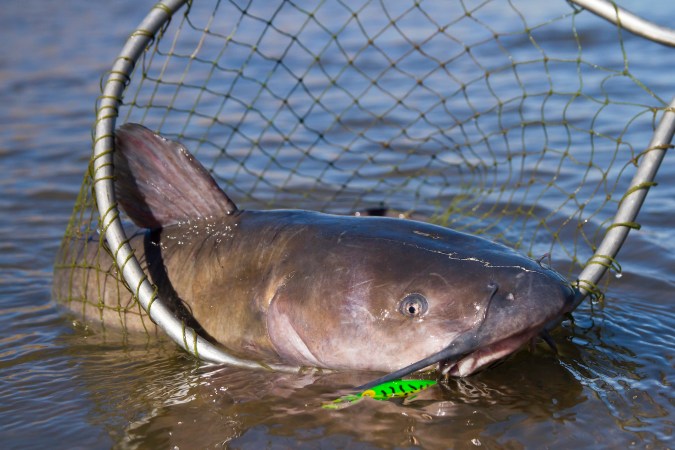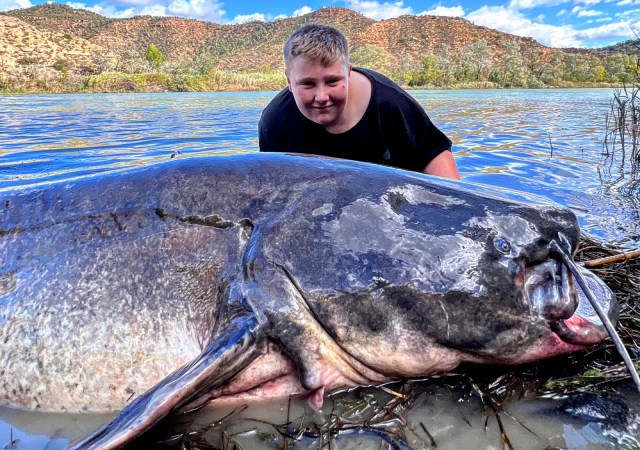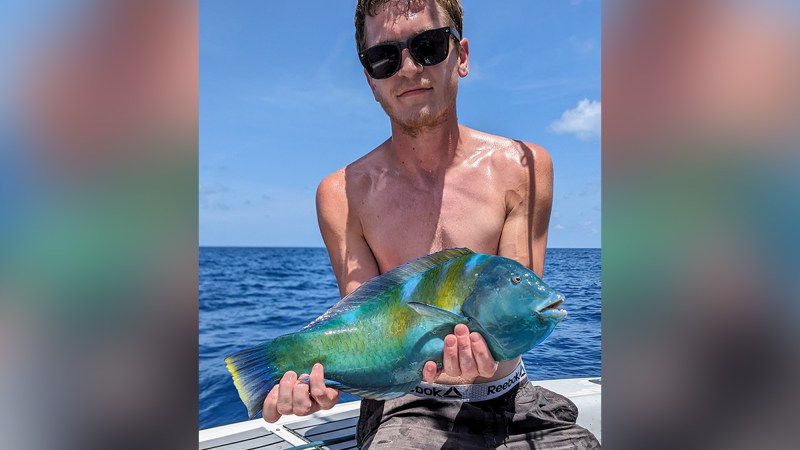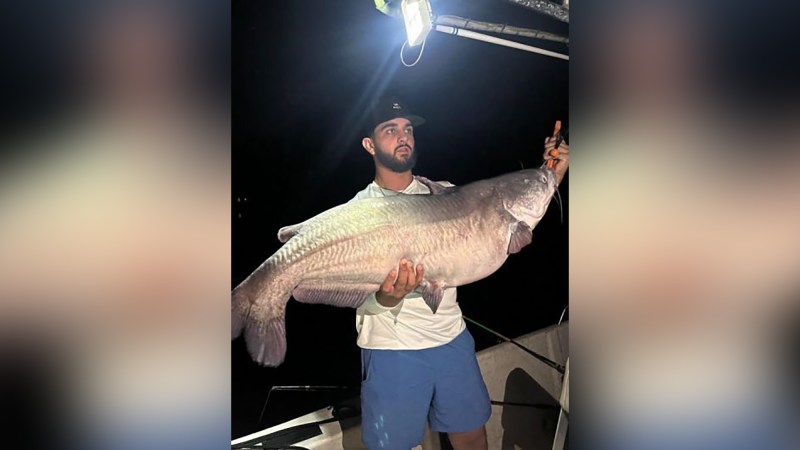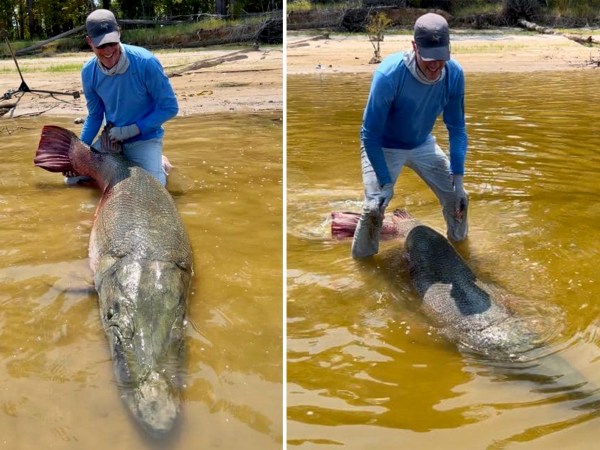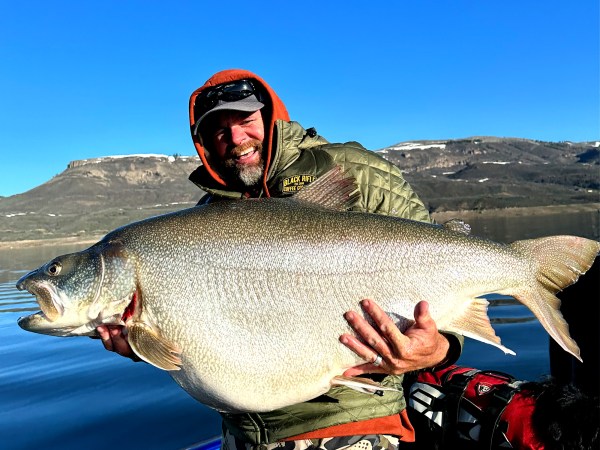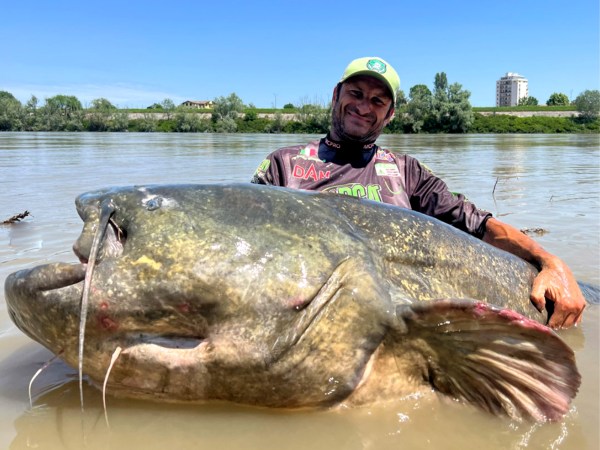We may never really know precisely what the biggest fish ever caught was — or who caught it, or where. The world’s waters are deep and mysterious places, and the best fishermen are good at keeping secrets. That’s just one reason why any modern list of the world’s biggest catches includes some caveats.
If we’re basing this list off size alone, we’d have to consider the 2-ton whale shark that Chinese commercial fishermen reportedly netted by accident in 2014. But then we’d also have to include the 661-pound giant stingray that some angler-researchers tagged in Cambodia in 2023, and which edged out the previous Guinness World Record for the largest freshwater fish ever caught. There are also plenty of huge fish that have been caught illegally and kept a secret, or caught and released and never recognized. (More on this in a minute.)
So, for the sake of keeping things simple, our official list of the biggest fish ever caught will only include world-record sportfish that were caught with a rod-and-reel and certified by the International Game Fish Association. These are fish caught by just one angler, who followed all the universally-agreed upon fishing rules, and who took the time to submit their catches to the organization for record-book consideration. In addition to listing the five biggest fish of all time, all of which were reeled in from the ocean, we’ll also look at the biggest freshwater fish ever caught. Finally, we’ll round out the list of the biggest fish ever caught with a few honorable mentions, including some of the most highly-prized game fish species in North America.
A Note on Fishing Records
The IGFA has been keeping track of the world’s sportfishing records since it was founded in 1939. Its record book is constantly updated and contains nearly every species of sportfish ever hooked on planet Earth. The IGFA recognizes line-class records, which are based on the breaking strength of the fishing line used, along with catch-and-release records, in which fish are measured by length and must be released alive. Then there’s the holy grail of traditional fishing records: the all-tackle world records, which honor the heaviest fish ever caught with a rod-and-reel. To be considered in this category, all potential record fish must be weighed on a certified scale, and they’re often killed in the process.
This is where record-keeping gets a bit complicated, as some anglers today would rather release their fish of a lifetime than be remembered for killing it. Take Captain Chip Michalove, for example. In 2022 he caught and released a giant hammerhead shark off the coast of South Carolina. It would have easily crushed the state record, and it very well could have beat out the all-tackle world record caught 16 years prior, but he didn’t care about either.
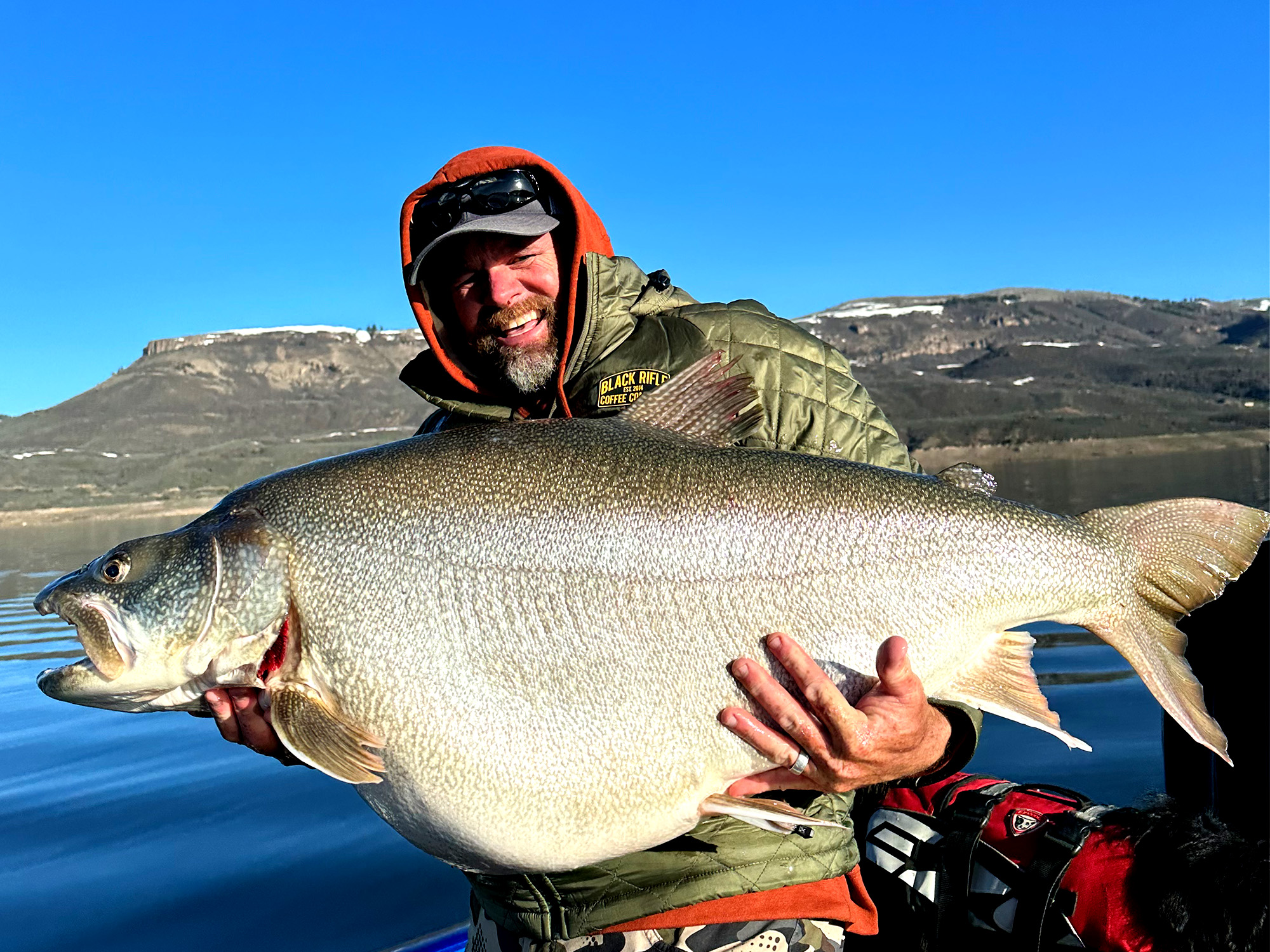
Photograph courtesy of Scott Enloe
Then there’s Scott Enloe, the Colorado angler who caught and released the new state-record lake trout in 2023 while fishing with his son on Blue Mesa Reservoir. His laker also outweighed the all-tackle world record by roughly a pound, according to his hand scale. But since confirming the weight would have meant killing the fish (it wouldn’t fit in his live well), he chose to photograph and release it instead. Enloe told Outdoor Life in May that he would try to get the fish certified by the IGFA as an all-tackle world record anyway, but it still hasn’t been accepted.
“I could have made it easy to put in the [IGFA] book, but I would have had to kill it, and I was not going to kill that fish,” Enloe said. “I would love to have the world record, and it is the world record. But if we don’t get it … I know what I caught, my son knows what I caught, and I’m okay with that.”
Read Next: Are Record Fish Stories as Captivating as They Used to Be?
So, as you read the following entries, just keep in mind that some of the biggest fish ever caught got away from the record books, making them difficult to track accurately here.
The Top 5 Biggest Fish Ever Caught
Looking specifically at the IGFA’s list of all-tackle world records, the biggest fish ever caught (by far) was a great white shark. Rounding out the Top 5 are four other saltwater species that all topped 1,000 pounds. No. 4 and No. 5 also happen to be two of the world’s most sought-after saltwater game fish, while sharks occupy the other top spots.
Bluefin Tuna – No. 5
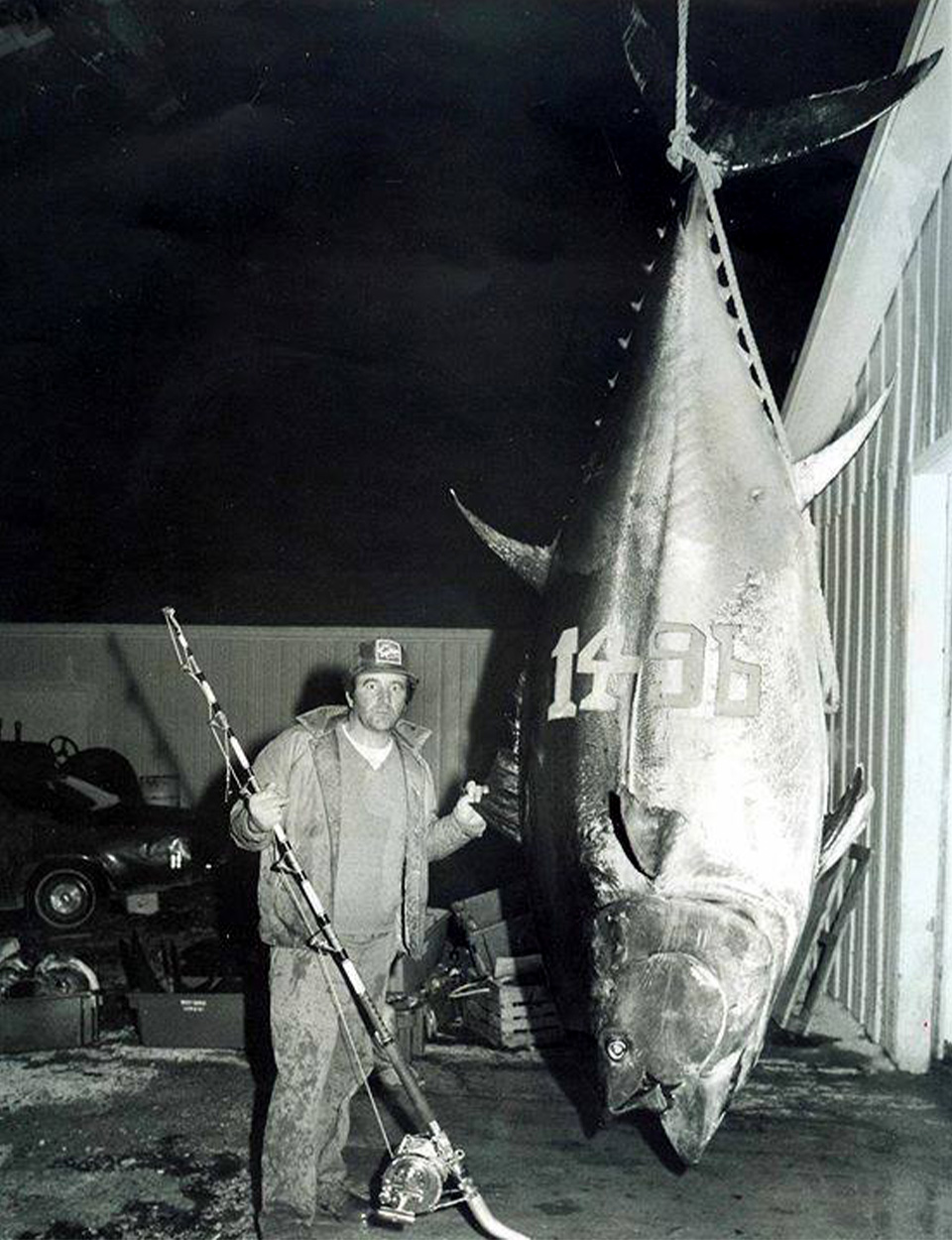
Photo courtesy IGFA
True giants of the deep, bluefin tuna are sleek, fast, and powerful. Speaking from experience, they fight harder than just about any other fish in the ocean. Their meat is also one of the most sought-after delicacies in the sushi world, giving them the rare distinction of being the most expensive edible fish on Earth. In 2019, a 613-pounder caught in Japan sold for $3.1 million at auction.
The largest bluefin tuna ever caught, according to the IGFA record book, weighed more than twice that. Caught by Ken Fraser in Nova Scotia waters in 1979, it tipped the scales at 1,496 pounds.
Black Marlin – No. 4
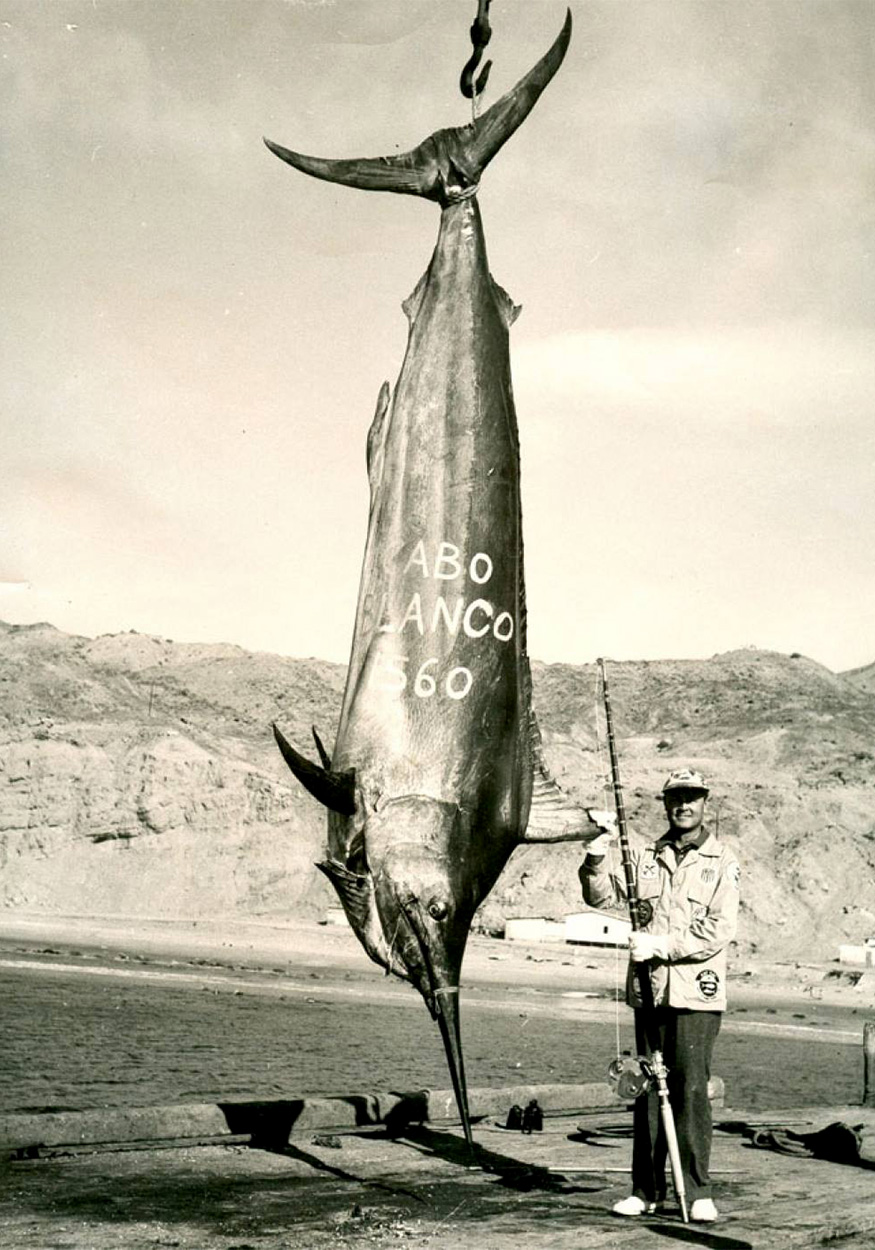
Photo courtesy IGFA
Marlin have everything you’d ever want in a game fish. They grow huge and fight like hell. They’re also a feast for the eyes with their beautifully-colored sides and pointed bills. Black marlin are the largest species in the marlin family. (Blue marlin are a close second, coming in just behind bluefin tuna at No. 6 in the IGFA’s book.)
The biggest black marlin ever caught is also the fourth heaviest fish ever caught, according to the IGFA. It weighed 1,560 pounds and was caught in Cabo Blanco, Peru, in 1953 by Alfred Glassell Jr.
Greenland Shark – No. 3
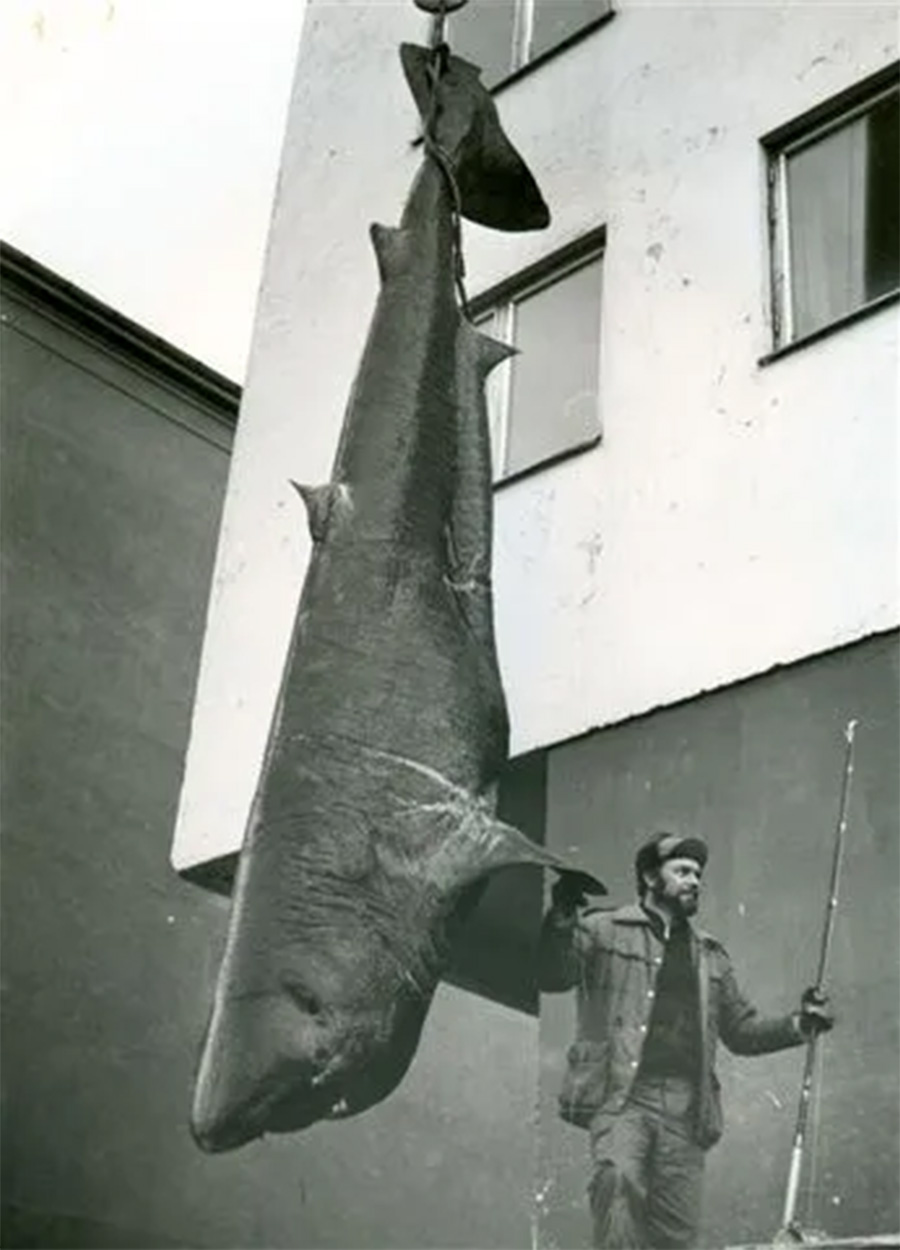
Photo courtesy IGFA
Coming in at No. 3 on the list is a Greenland shark, a lesser-known species that lives in the Arctic Ocean and is rarely seen by most anglers. These sharks are also the longest-living vertebrates in the world, reaching ages between 250 and 500 years old.
The all-tackle world record Greenland shark was caught in Norway in 1987 by Terje Nordtvedt. The shark ate a herring fished on the bottom, and it tipped the scales at 1,708 pounds 9 ounces.
Tiger Shark – No. 2
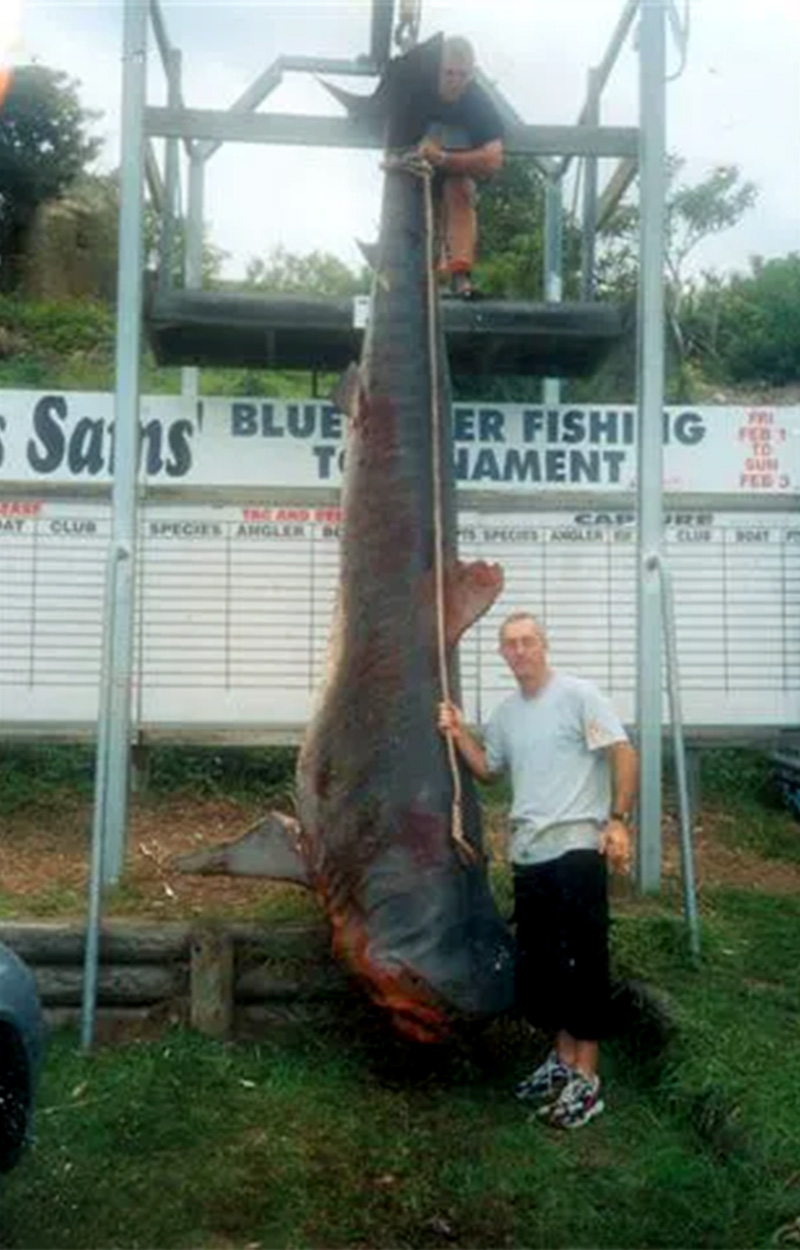
Photo courtesy IGFA
The second largest fish ever caught and certified by the IGFA is a tiger shark. Along with great white sharks and bull sharks, this species rounds out what some call the “Big Three” — the three shark species most likely to attack a human.
The all-tackle world record tiger shark weighed 1,785 pounds 11 ounces. It was caught in Australian waters in 2004 by Kevin James Clapson.
Great White Shark – No. 1
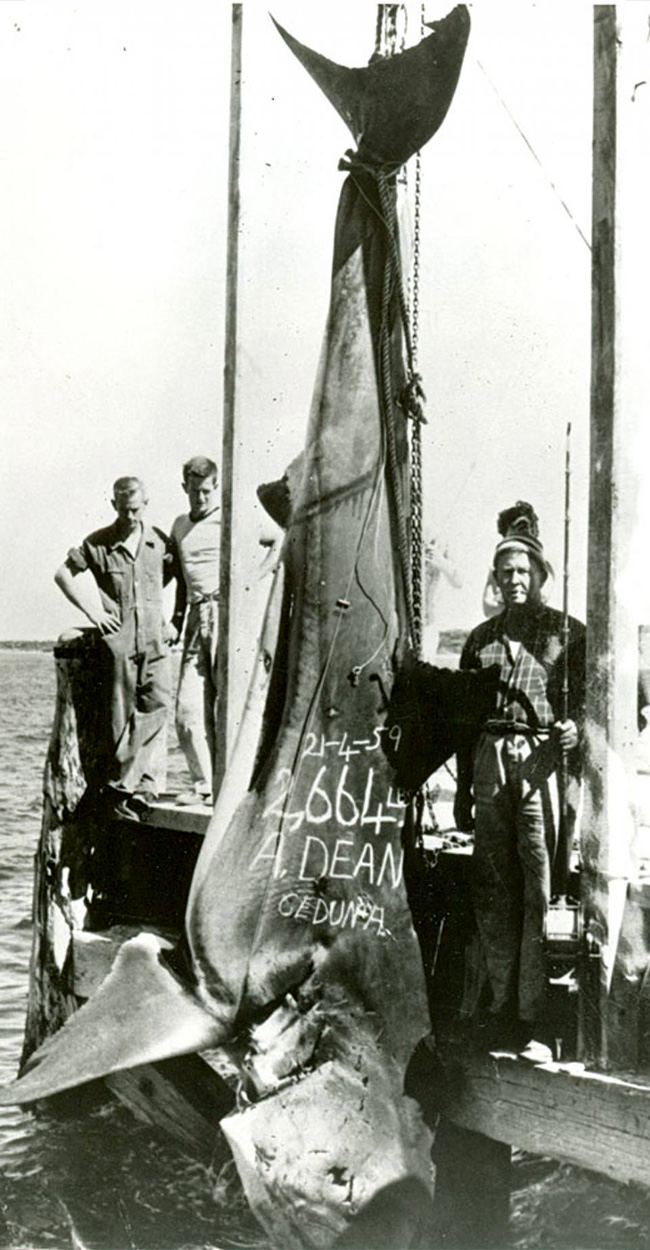
Photo courtesy IGFA
The biggest great white shark ever caught weighed 2,664 pounds and was landed off Australia’s southern coast in 1959. Alfred Dean reeled in the monster shark on 130-pound test. He used a porpoise for bait.
This is also one of the more interesting fishing records for the simple fact that it will likely never be broken — at least, not anytime soon. Great white sharks are now a protected species in most of the world’s oceans. They’re federally protected in U.S. waters, and it’s illegal to harvest them in many other places as well, which means they’re no longer accepted by the IGFA as potential world-record fish. You also can’t get away with using porpoises or dolphins for bait these days, as it’s against the law in both U.S. and Australian waters to catch, kill, or otherwise harass these species.
The Biggest Freshwater Sportfish Ever Caught
Giant stingrays aside, the biggest freshwater fish ever caught, according to the Guinness Book of World Records, was a 646-pound Mekong giant catfish. A team of fisherman in Thailand landed the fish after an hour-long battle, according to National Geographic. And although they tried to keep it alive, it died and was eaten by local villagers. Since the IGFA doesn’t recognize fish that were landed by multiple anglers (the rules dictate that only one person can touch the rod during the battle), we’ll move down the list to another giant catfish species that’s native to Europe and Asia.
Wels, the King of Catfish
The largest freshwater catfish ever caught on a rod-and-reel and certified by the IGFA was a 297-pound 9-ounce Wels catfish. European angler Attila Zsedely caught the all-tackle world record Wels from Italy’s River Po in 2010.
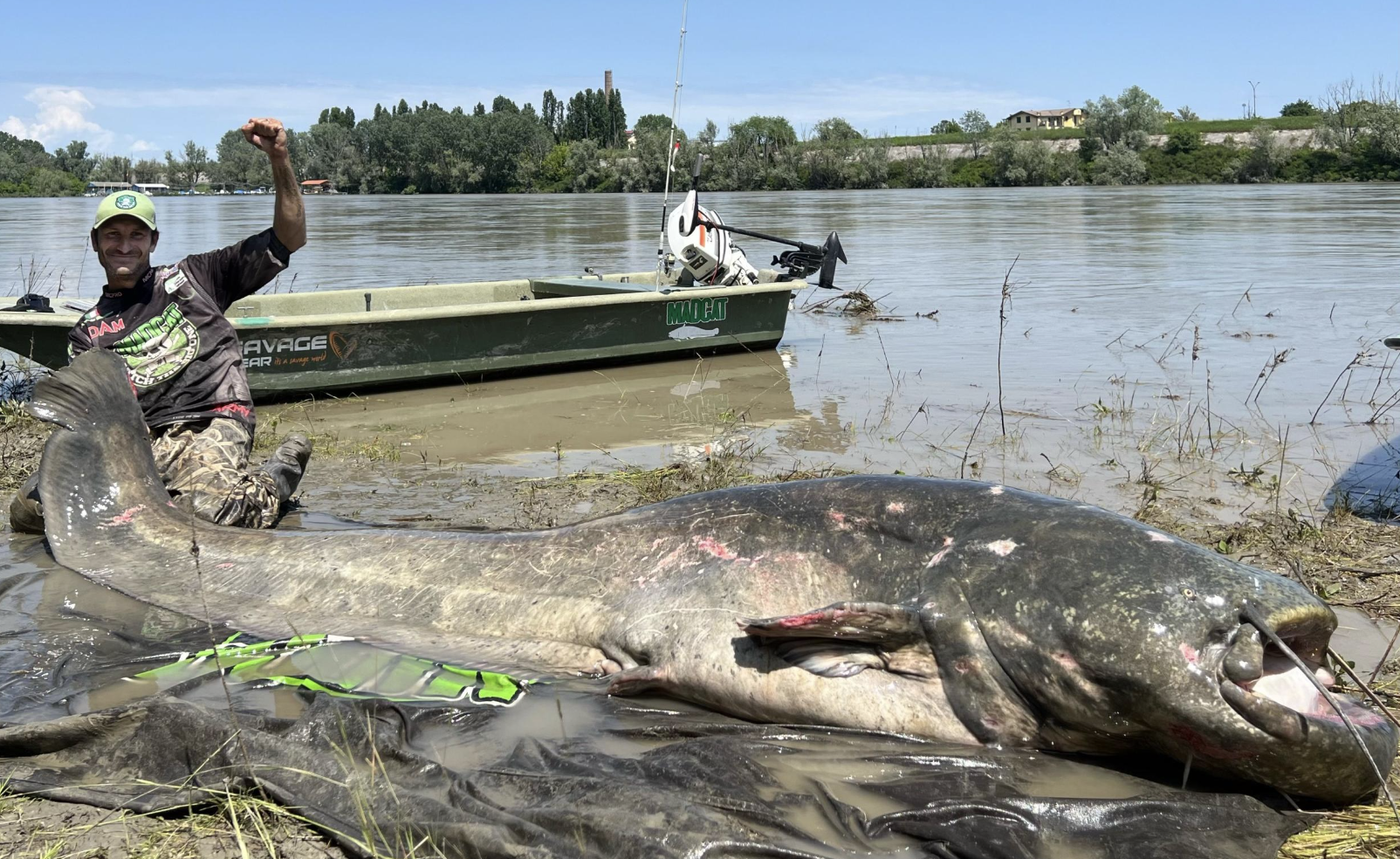
In 2023, Italian angler Alessandro Biancardi caught and released a massive Wels catfish from the same river that was bigger, lengthwise, than Zsedely’s fish. Biancardi’s fish measured 285 centimeters, while Zsedley’s measured 245 centimeters. This has led some to speculate that Biancardi’s catfish could have weighed upward of 300 pounds, which would have easily replaced Zsedeley’s record. But since Biancardi released the fish alive instead of bringing it to a certified scale, we’ll never know for sure.
Some of the other biggest record catfish from around the world include another Mekong giant catfish that was caught in Thailand in 2010 and was later certified by the IGFA. That fish weighed 260 pounds.
The biggest record catfish ever caught in North America was a blue catfish that weighed 143 pounds. Richard Nicholas Anderson caught the big blue cat in 2011 while fishing Kerr Lake in Virginia.
Honorable Mentions
We couldn’t make a proper list of the biggest fish ever caught without including a few of North America’s most beloved game fish. Starting with the biggest species, we’ll work our way from giant sturgeon down to black bass.
The Biggest Sturgeon
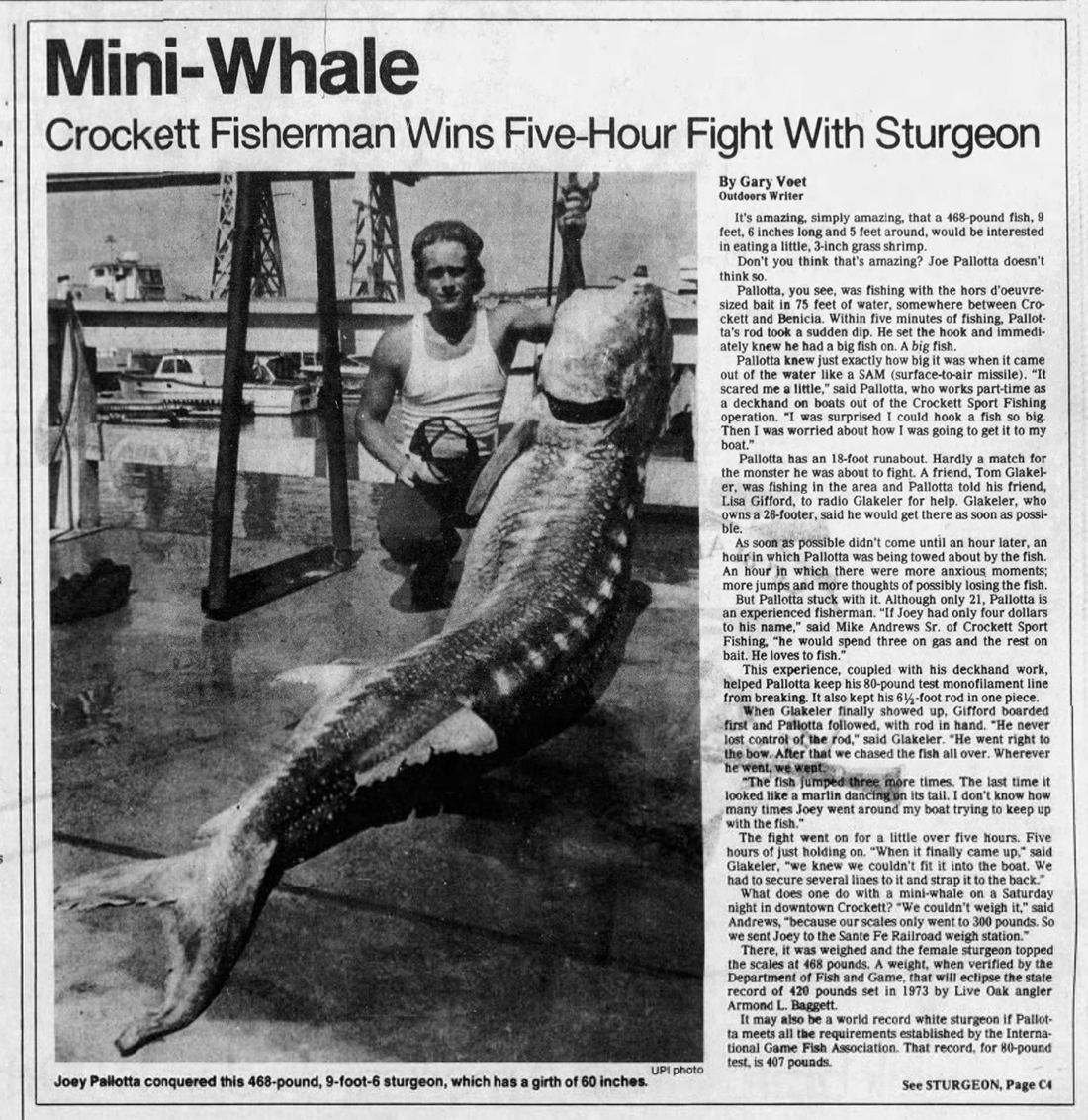
The white sturgeon occupies a unique place on this list because it’s an anadromous fish that lives in both salt- and freshwater. Along with the eight other members of the sturgeon family, these ancient fish are true dinosaurs. Scientists believe they’ve been around for about 200 million years. However, many of these species are now considered endangered due to overfishing for the caviar trade.
White sturgeon are the largest species in this family, and they’re faring a little better than some of their cousins. They can still be caught in some larger rivers on the West Coast (including the Snake and Columbia Rivers), but they must be released alive. Which means the all-tackle world record for the species should stand for some time. That record sturgeon weighed 468 pounds, and was caught in a California bay in 1983.
The Biggest Gar
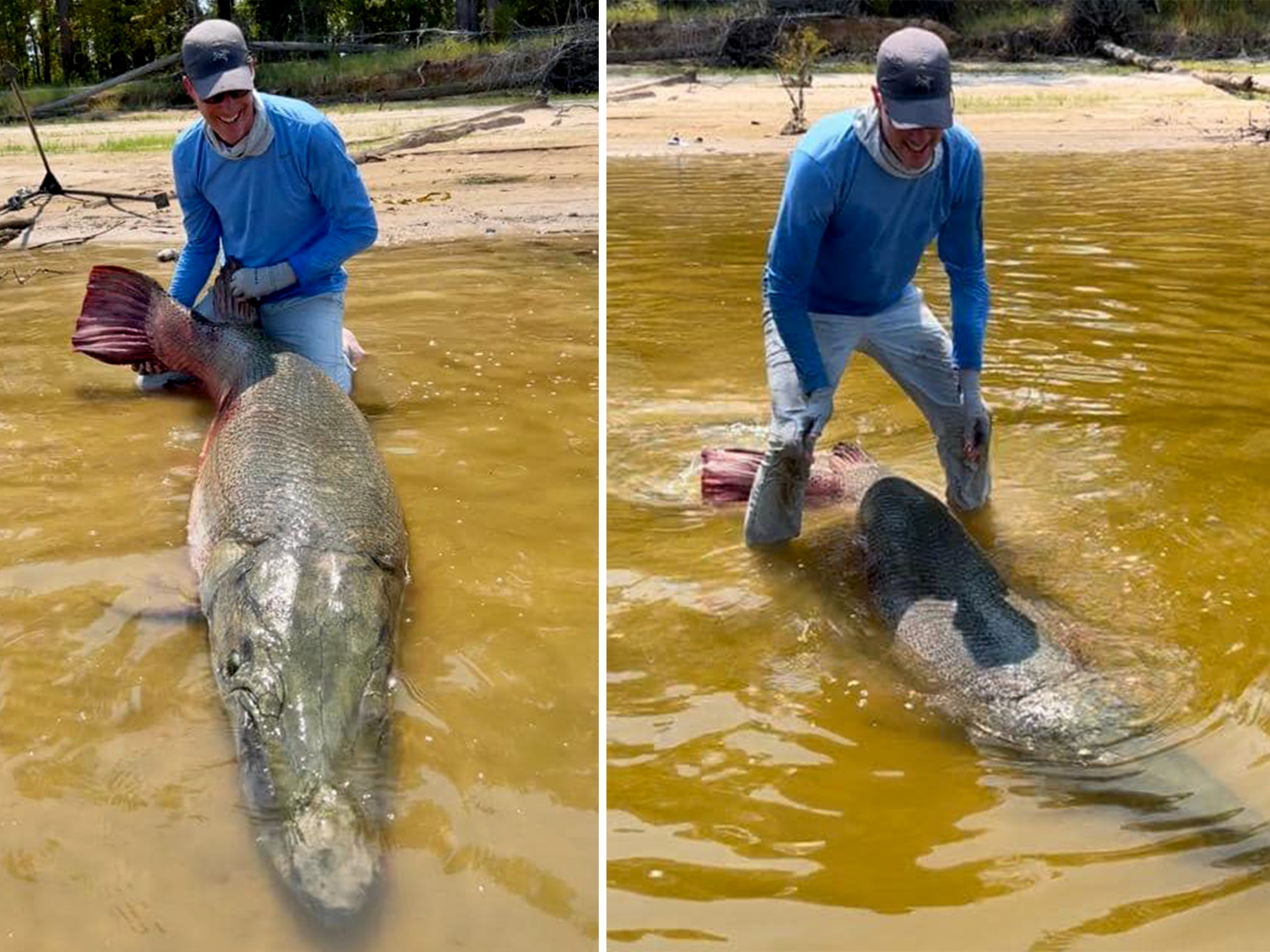
Another living dinosaur, alligator gar are a prehistoric species and the largest members of the gar family. Until fairly recently, these toothy critters were vilified by anglers as a trash fish that ate more desirable game fish like bass and crappie. Because of this negative perception — one that fisheries biologists have now debunked — they were killed throughout their native range and even eradicated from some areas.
This attitude has come full circle, with anglers now targeting these freshwater giants in Texas and other parts of the South as gamefish in their own right. The all-tackle world record alligator gar was caught in the Lone Star State in September 2023; it weighed 283 pounds. Amazingly, the angler who reeled in the world-record fish did so using 6-pound test.
The Biggest Muskie
Known as “the fish of 10,000 casts,” muskellunge (better known as muskies) are notoriously difficult to hook and land, which makes them one of the most prized sportfish on the continent. Muskies are the largest members of the Esox family, which includes pike and pickerel.
The all-tackle world record muskie was caught in Wisconsin’s Lake Court Oreilles back in 1949. It weighed 67 pounds 8 ounces and ate a hard-bodied crankbait.
The Biggest Salmon

Photo courtesy IGFA
Chinook (or king) salmon are the largest of the world’s salmonids. Like sturgeon, these are anadromous fish that are born in the river, go out to sea, and return to the river to spawn. Sadly, this noble, ocean-going species is on the decline throughout its native range, with many runs listed as threatened or endangered.
The all-tackle world record Chinook salmon came from the Kenai River in Alaska, and it weighed 97 pounds 4 ounces. Angler Les Anderson caught the fish drifting a spin-n-glo.
The Biggest Trout
North American anglers love catching trout, and the continent is now home to more than a dozen species, subspecies, and hybrids. This includes native fish like cutthroat and rainbow trout, along with the European brown trout that were introduced here during the late 19th century.
The largest of these species is the lake trout, which, like brook trout, are technically in the char family. Because of their gargantuan size, “lakers” have been widely introduced outside of their native range — which includes Canada, Alaska, the Great Lakes, and New England. The all-tackle world-record laker, according to IGFA, weighed 72 pounds and was caught in Canada’s Northwest Territories. As mentioned above, there’s a good chance that bigger lakers have been caught but never recognized by the organization.
The Biggest Bass

Photo courtesy IGFA
Far surpassing trout in terms of overall popularity, largemouth bass are widely considered North America’s favorite gamefish. The biggest member of the black bass family, largemouths have been stocked by fish and game agencies across the country, and they can now be caught in pretty much every U.S. state outside of Alaska.
Not surprisingly due to their popularity, the largemouth bass record is one of the most coveted records in the angling world. The IGFA currently lists two bucketmouths as tied for the No. 1 spot, and they each weighed 22 pounds 4 ounces. The first world record was caught by George Perry in Georgia’s Montgomery Lake back in 1932, but that’s about all we know about it. Very few details exist about Perry’s catch and there are no known photos of the fish. The more recent world record was caught from a lake in Japan in 2009 by Manabu Kurita.
Read Next: The Best Bass Lures
Striped bass are another beloved bass species that are targeted by saltwater anglers up and down the East Coast. There are also healthy populations of landlocked stripers in the U.S., but they don’t grow quite as large as their saltwater counterparts. The world-record striped bass was caught in Long Island Sound in 2011. It weighed 81 pounds 14 ounces.
Biggest Fish Ever Caught FAQs
It depends on how we define the word “strongest.” It’s also fairly subjective. But if you were to take a survey among the saltwater anglers who regularly target some of the biggest fish in the ocean, most of them would probably say bluefin tuna. These fish have a reputation for making deep, blistering runs that’ll wear out even the toughest of anglers.
This is another question that could generate a never-ending debate among anglers. When it comes to fishing in freshwater, steelhead (a rainbow trout that runs to the ocean and back) and muskies are some of the most difficult fish to catch. A list of the hardest fish to catch in saltwater would likely include marlin, sailfish, and other members of the billfish family, along with permit and Giant Trevally.
The biggest fish species on planet Earth is the whale shark. They can grow up to 40 feet long and weigh up to 40 tons, according to NOAA, and they’re protected in many countries. They’re classified as fish and not whales, but like many whale species, whale sharks are filter feeders that eat plankton, krill, and other small organisms. This means it’s almost impossible to catch them with a rod-and-reel, although they’re occasionally caught on accident by commercial fishermen using gill nets.
There is no such thing. The only fish that’s impossible to catch is the one you never cast to.
Final Thoughts
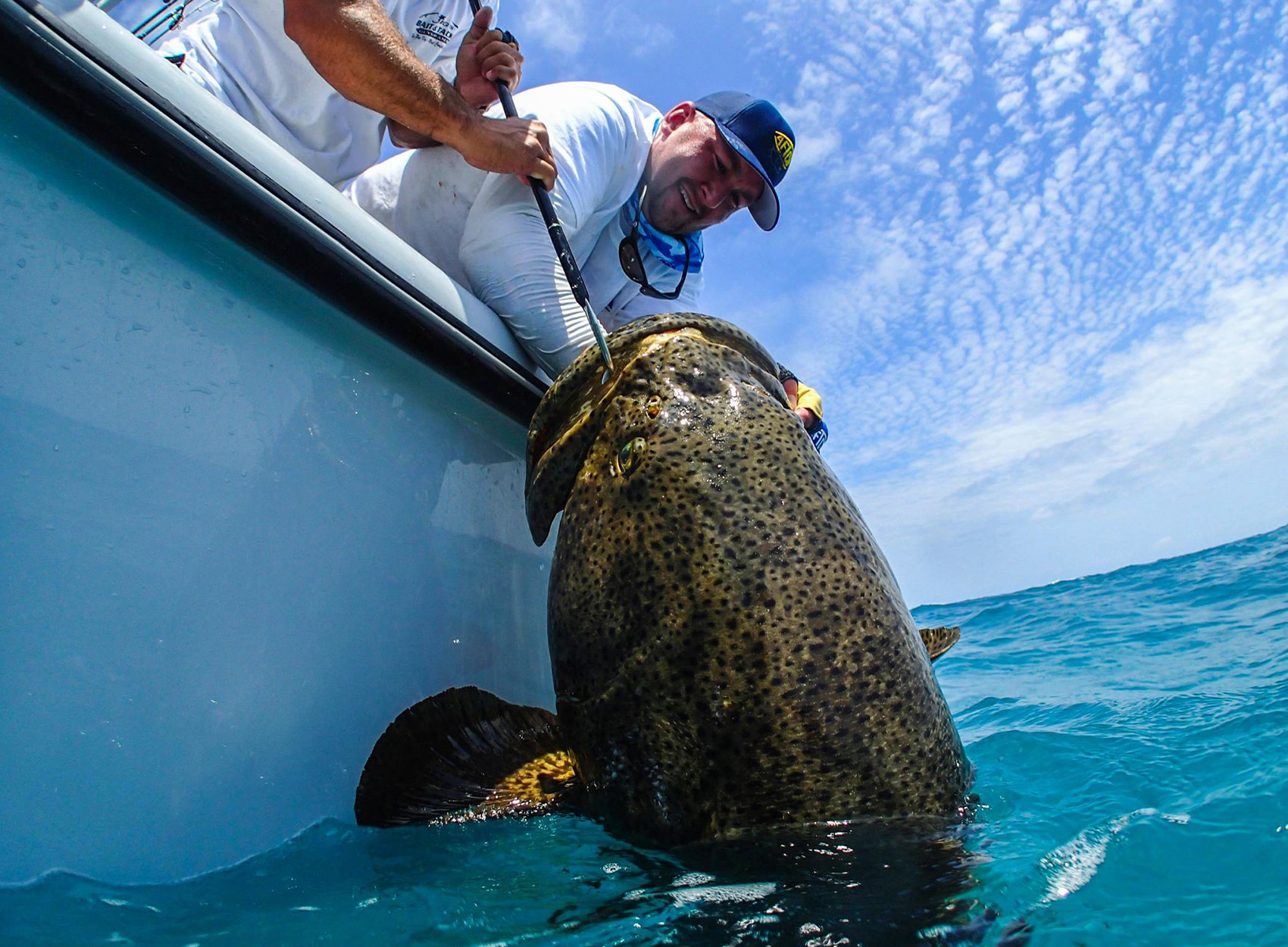
(AFTCO, via Facebook)
The biggest fish ever caught on a rod-and-reel and certified by the IGFA is a huge great white shark that was caught in Australia and weighed more than 2,000 pounds. Every other fish in the Top Five came from the ocean as well.
There have also been plenty of big fish pulled from freshwater lakes and rivers around the world. The biggest of these are all catfish, and some of the catfish species native to Europe and Asia far outweigh the big blue cats and giant flatheads that we catch here in North America. One of the best things about fishing records, however, is that they’re constantly being broken. Which means the biggest fish in the world is still out there somewhere.

